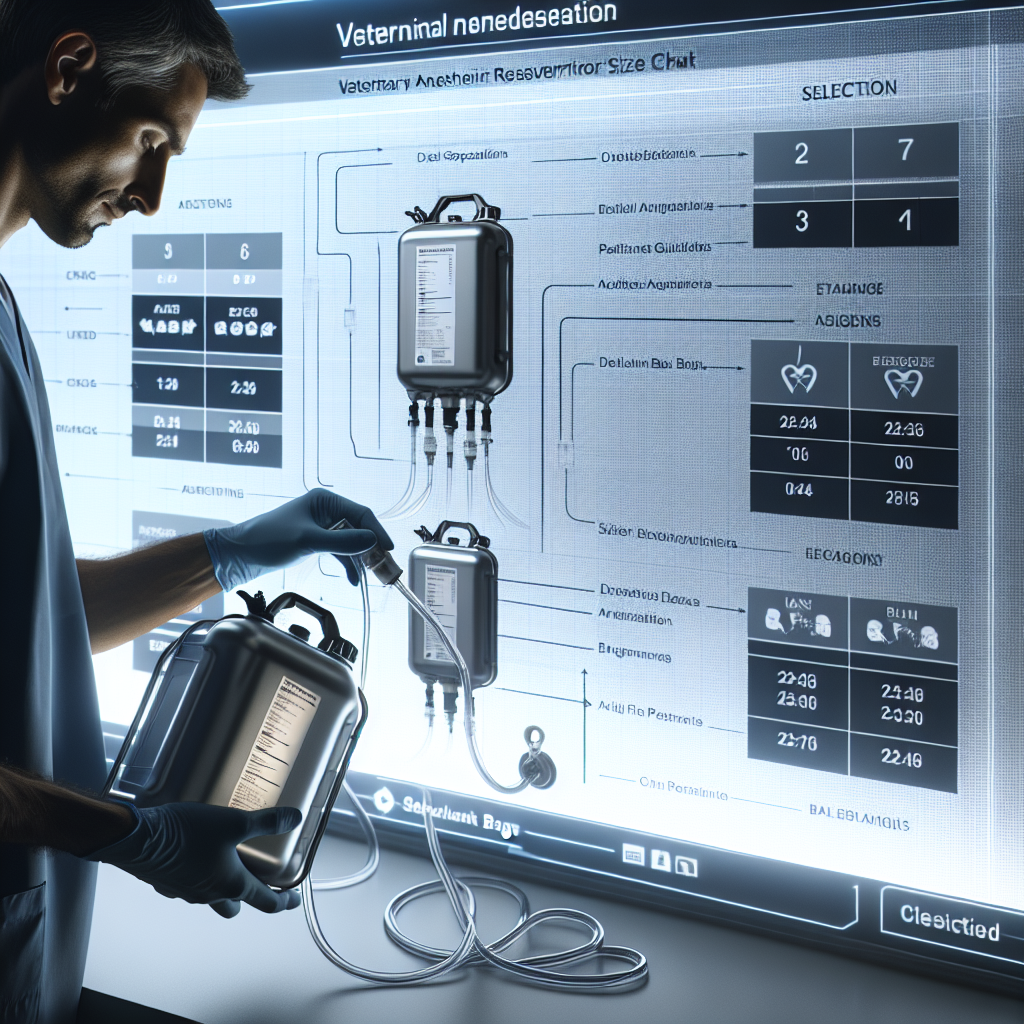Veterinary Anesthesia Reservoir Bag Size Chart: The Ultimate Selection Guide5 min read

Choosing the right anesthesia reservoir bag size is critical for ensuring safe and effective veterinary procedures. With a wide range of patient sizes and species to consider, it can be challenging to determine the optimal equipment specifications. This comprehensive guide provides detailed selection criteria and technical specifications to help you make informed decisions when choosing veterinary anesthesia reservoir bags.
Factors Influencing Reservoir Bag Size Selection
Several key factors come into play when selecting the appropriate anesthesia reservoir bag size for veterinary patients. Understanding these variables is essential for optimizing patient safety and achieving the desired anesthetic outcomes.
Patient Size and Weight
The primary consideration when choosing a reservoir bag is the patient’s size and weight. Smaller animals, such as cats and small dogs, require smaller bag volumes compared to larger breeds and species. Using a bag that is too large can lead to excessive dead space and inefficient ventilation, while a bag that is too small may not provide adequate reserve volume.
Species-Specific Respiratory Characteristics
Different animal species have unique respiratory characteristics that impact the selection of anesthesia equipment. For example, birds have a significantly higher respiratory rate and lower tidal volume compared to mammals. Reptiles, on the other hand, have a much slower respiratory rate and can tolerate larger tidal volumes. Understanding these species-specific differences is crucial for selecting the appropriate reservoir bag size.
Procedure Duration and Complexity
The length and complexity of the surgical procedure also influence the choice of reservoir bag size. Longer surgeries or those involving more invasive techniques may require larger bag volumes to accommodate potential fluctuations in anesthetic depth and ventilation requirements. Conversely, shorter and less complex procedures may allow for the use of smaller reservoir bags.
Reservoir Bag Size Chart by Species and Weight
To simplify the selection process, refer to the following chart that provides recommended reservoir bag sizes based on species and weight ranges. Keep in mind that these are general guidelines, and individual patient factors should always be considered.
| Species | Weight Range | Reservoir Bag Size |
|---|---|---|
| Cats | 2-6 kg | 0.5-1 L |
| Small Dogs | 5-15 kg | 1-2 L |
| Medium Dogs | 15-30 kg | 2-3 L |
| Large Dogs | 30-50 kg | 3-4 L |
| Giant Breeds | 50+ kg | 4-5 L |
| Birds | 0.1-2 kg | 0.1-0.5 L |
| Reptiles | 0.5-5 kg | 0.5-1 L |
Integrating Reservoir Bags with Breathing Circuits
Proper integration of the anesthesia reservoir bag with the breathing circuit is essential for optimal performance. The size of the breathing circuit components, such as tubing diameter and length, should be compatible with the selected reservoir bag to minimize resistance and ensure efficient gas flow.
Matching Breathing Circuit Components
When assembling the anesthesia breathing circuit, consider the following guidelines for matching components:
- Use tubing with an appropriate diameter that allows for smooth gas flow without excessive resistance.
- Ensure that the tubing length is sufficient to accommodate patient positioning and movement during the procedure.
- Select connectors and adapters that provide a secure and leak-free connection between the reservoir bag and breathing circuit components.
Leak Testing and Calibration
Before each use, it is crucial to perform a thorough leak test of the entire anesthesia system, including the reservoir bag and breathing circuit. Any leaks or disconnections can compromise patient safety and lead to inadequate anesthesia delivery. Regularly calibrate the anesthesia machine and monitor the accuracy of gas flow and pressure measurements to ensure consistent performance.
Maintenance and Replacement of Reservoir Bags
Proper maintenance and timely replacement of anesthesia reservoir bags are essential for ensuring their reliable performance and patient safety. Implement a regular inspection and maintenance schedule to identify any signs of wear, damage, or contamination.
Inspection and Cleaning
Visually inspect the reservoir bag before each use for any cracks, holes, or other damage that may compromise its integrity. Clean the bag thoroughly after each procedure, following the manufacturer’s recommended guidelines for disinfection and sterilization. Pay special attention to the valves and connections, as these areas are prone to accumulating debris and bacteria.
Replacement Criteria
Replace anesthesia reservoir bags based on the following criteria:
- Manufacturer’s recommended lifespan or number of uses
- Visible signs of wear, such as cracks, discoloration, or loss of elasticity
- Contamination that cannot be effectively cleaned or sterilized
- Changes in performance, such as increased resistance or leaks
By adhering to a consistent replacement schedule and using high-quality, compatible reservoir bags, you can minimize the risk of equipment failure and ensure the safe and effective delivery of anesthesia to your veterinary patients.
Frequently Asked Questions
What happens if I use a reservoir bag that is too large for my patient?
Using a reservoir bag that is too large for the patient can lead to excessive dead space in the breathing circuit. This dead space can cause inefficient ventilation, as the patient will be rebreathing a larger portion of expired gases. Additionally, it may be more challenging to maintain the desired anesthetic depth and monitor the patient’s respiratory function accurately.
Can I use the same reservoir bag size for all my patients?
While it may be tempting to use a one-size-fits-all approach, it is not recommended to use the same reservoir bag size for all patients. Different species, sizes, and weights have varying respiratory requirements and tidal volumes. Using an inappropriately sized bag can lead to suboptimal anesthesia delivery and potential complications. Always refer to the recommended size chart and consider individual patient factors when selecting a reservoir bag.
How often should I replace my anesthesia reservoir bags?
The frequency of reservoir bag replacement depends on several factors, including the manufacturer’s recommendations, frequency of use, and any signs of wear or damage. As a general guideline, replace reservoir bags at least every 6-12 months or sooner if they show visible signs of deterioration or fail to perform optimally. Always follow the manufacturer’s specific guidelines for replacement intervals to ensure the best performance and patient safety.
Conclusion
Selecting the appropriate anesthesia reservoir bag size is a critical aspect of providing safe and effective veterinary anesthesia. By considering factors such as patient size, species-specific respiratory characteristics, and procedure requirements, you can make informed decisions when choosing reservoir bags. Utilize the provided size chart as a starting point, and always prioritize individual patient needs and compatibility with the breathing circuit components.
Regular maintenance, inspection, and timely replacement of reservoir bags are equally important for ensuring their reliable performance and minimizing the risk of complications. By staying informed about the latest guidelines and best practices in veterinary anesthesia equipment selection, you can optimize patient outcomes and deliver the highest quality of care.

The Health Insight Team consists of dedicated students and PhD candidates from leading medical schools around the world. Collaborating with experienced medical professionals, our team provides well-researched, evidence-based information on a wide range of health topics, including prescription medications, surgical procedures, anesthesia, and nutritional health. The articles by MedicalHubNews PHD Team are for educational purposes only. For medical issues, consult your doctor or healthcare provider.